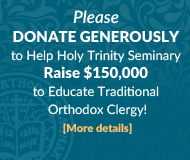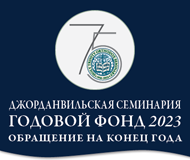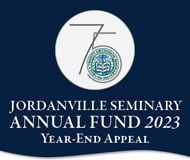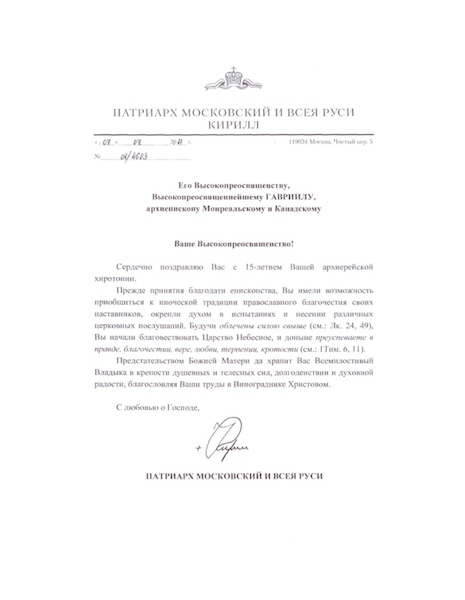News
-
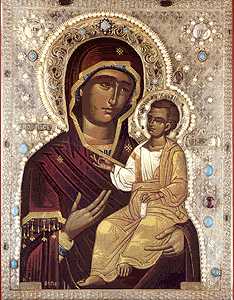
11/24 November – “Iveron – Myrrhstreaming” (Montreal) Icon of the Mother of God
24 November 2011
Montreal Iveron icon was painted on Athos in 1981 by a Greek monk, who copied the original icon of the Mother of God Keeper of the Portal. In 1982, this icon was brought from Mount Athos to Montreal (Canada) by Joseph Muños-Cortez, of Spanish decent, who converted to Orthodoxy.
“On 24 November, at 3:00 AM, I woke up because of a strong fragrance. Initially, I thought that it emanates from the relics, or from a spilt bottle of perfume, but, having approached the icon, I was amazed: it was all covered by fragrant myrrh! I was motionless in place on account of such miracle!” – brother Jose related later on.
Soon the myrrhstreaming icon was taken to the church. Since then, the icon of the Mother of God streamed myrrh continuously, with the exception of Holy Weeks. It is notable, that the myrrh flowed mainly from the hands of the Mother of God and Christ, and also from the star, on the right shoulder of the Most Pure One. At the same time, the back side of the icon was always dry.
The wonderworking icon visited North and South America, Australia, New Zealand, Bulgaria, and Western Europe. Everywhere, throughout its travels it spread love and harmony, as for example in one parish, where all those gathered once again found a way toward prayer and church unity. Its presence intensified the fervor of prayer to such and extent, that Liturgies, served with it in church could be compared to those of Pascha, that are so fervent in the Orthodox Church.
Many counts of people coming back to church, confession, and communion are known. Thus, one woman, having learned of the death of her son, prepared to take her own life, but, touched to the depths of her soul at the sight of the wonderworking icon, she repented of her awful intention and immediately confessed.
The icon streamed myrrh for 15 years. On the night of 31 October, 1997, the keeper of the icon, Joseph Muños-Cortez, was brutally murdered in Athens, Greece, while the Wonderworking Iveron Icon disappeared without a trace…
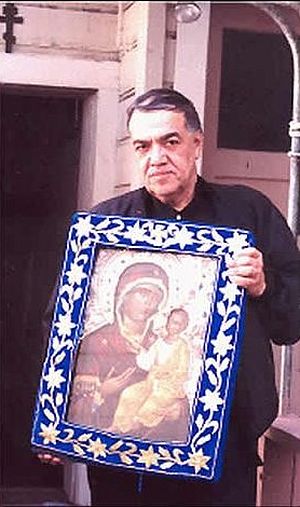
The icon appeared soon after the glorification of the New Martyrs of Russia, the Holy Royal Martyrs, it appeared in the place where the martyrs were first glorified, in the fold of the Russian Orthodox Church Abroad, in the Russian Diaspora… It also appeared to us on the eve of the changes in the entire realm of Historical Russia.
Evermemorable brother Jose quoted the words of a certain pious maiden in this regard: “Myrrhbearing women came to anoint the Body of Christ before His Resurrection. Like unto them, the Mother of God today anoints the Russian People, foreshadowing the resurrection of Russia.”
In the last years of his life, brother Jose always thought that the Icon, of which he was the keeper, would have to visit Russia soon. At the same time, he repeated several times that the Icon cannot come to Russia secretly, “over the fence”, “through the back door.” It should enter the Fatherland by the main gates, with a solemn celebration, so that the entire orthodox Russia could make a prostration to the ground before the Most Pure One. The meeting of the Keeper of the Portal, Who would have returned to Her Own Home, could have marked the beginning of the church unity…
However, the Lord judged things to be different.
-
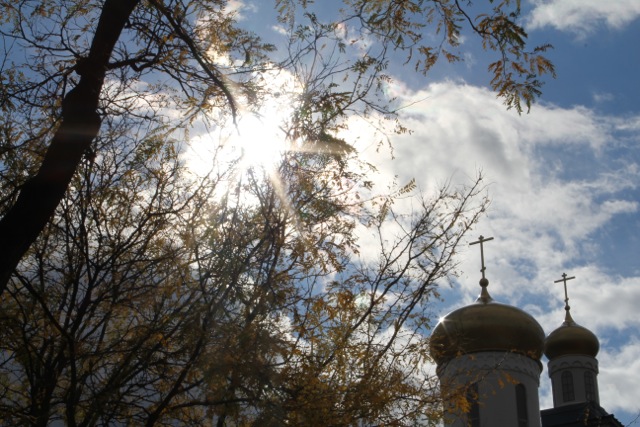
Protection of the Most Holy Theotokos in Ottawa
17 November 2011
This year the Protection of the Mother of God Parish in Ottawa celebrated its parish feast on the 15th and 16th of October. His Eminence, Archbishop Gabriel presided over the services, assisted by the rector of the parish, Fr. Stelian Liabotis, the second priest Fr. Alexis Pjawka, and the parish Protodeacon Fr. Vasily Milonow. Fr. Peter Perekrestov from San Francisco also served. The choir sang under the direction of the Reader Elias Dubelsten.
A moleben and procession took place after the conclusion of the Divine Liturgy. In his congratulatory remarks, Vladyka Gabriel congratulated the rector, clergy and parishioners with the feast day.
After the service, everyone was invited to the parish hall to a festive lunch prepared by the sisterhood.
-

St. Herman’s youth conference
25 October 2011
ENCYCLICAL
To All the Reverend Rectors of the Montreal & Canadian Diocese
DIRECTIVE
This year, the St Herman’s Youth conference will be held, with God’s help, at the Protection of the Holy Virgin Memorial Church, Ottawa, Canada. Please, remember, that the St Herman’s youth conference for more then three decades continues it’s mission to provide a rare opportunity for all of our Orthodox youth to meet together, to become acquainted, to participate in group discussions and to listen to lectures of a purely Orthodox character, and finally and most importantly, to prepare for and receive communion of the Holy Mysteries of Christ on the feast day of St Herman, 12/25 December.
The St Herman’s committee which is undertaking the organization of the conference is working very hard to contain the costs of attending these conference to a minimum. As always, the outlays for food and lodging are the highest. For this reason we are appealing to each parish to make this conference accessible to as many of our Orthodox youth as possible.
In connection with this, I urgently request that all the reverend rectors take up a special collection on Sunday, November 7/20 of this year in our parishes at the end of the Divine Liturgy to help defray the costs of organizing this conference. I would also ask that this be announced from the amvon prior to the collection taking place.
The funds collected will help to cover the expenses of the conference and will also be used to make it possible for the St Herman’s organizing committee to assist young people from families of limited means.
It is also asked of each parish to sponsor al least one representative from amongst the youth – to take part in the St. Herman’s Conference.
I thank you in advance for your support. Please do not forget that our youth is our future. We must support it!
Please send cheques to:
St. Herman’s Youth Conference
c/o Rev. George Lagodich
6738 32 Ave
Montreal, QC H1T 3C9Gabriel
Archbishop of Montreal and Canada
October 11/24, 2011
-
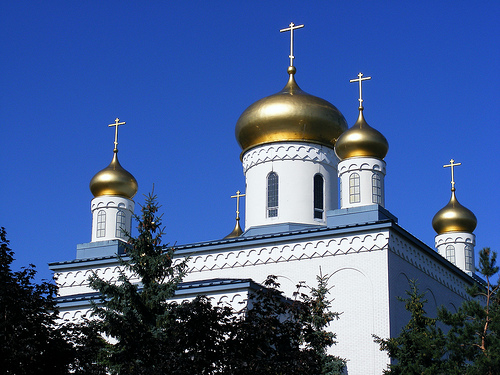
Protection of the Most Holy Theotokos
13 October 2011
We apologize: this material is unavailable in English at this time.
-
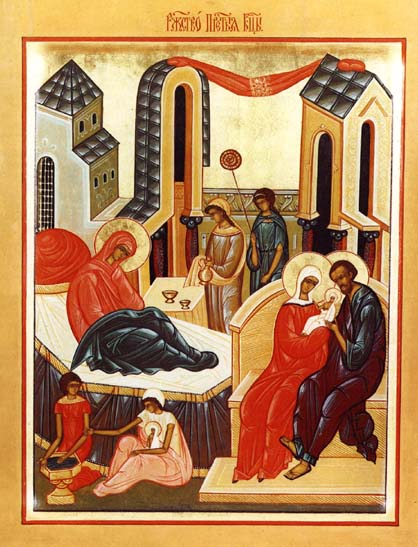
St. Gregory Palamas – Sermon on the saving Nativity of our Most Blameless Lady Theotokos and Ever-Virgin Mary
21 September 2011
1. Actually, any time is convenient in order to make a beginning of the saving way of life; showing that, the great Paul said: “Behold, this is appropriate time, behold, this is the day of salvation. let us therefore cast off the works of darkness, and let us put on the armour of light. Let us walk honestly, as in the day” (Romans 13:11-13); not calling a certain single hour or day appropriate for salvation, but (he says that) after the appearance of our Lord and God and Saviour Jesus Christ, any time is appropriate for it. For since, as with the rising of the material sun, there comes the time for bodily activity for people, as David said: “The sun shall rise, and man shall go unto his work and unto his labor until the evening” (Psalm 103:22,23); thus, when the Sun of Righteousness shone unto us in the flesh, after His appearance, any time is appropriate for the spiritual activity, the same Prophet manifesting it in another place, after he said about the coming of the master: “The Stone, which the builders rejected, the Same has become the head of the corner”, brought: “This is the day that the Lord hath made, let us rejoice and be glad in it” (Psalm 117:22,24). Yet, under the material sun, which is as though interrupted by night, “man”, it is said, “shall go forth unto his labor until the evening”; the Sun of Righteousness, being unsetting, and according to the word of the Apostle, “possessing no variableness neither shadow of turning” (James 1:17), makes the appropriateness of the time for the spiritual activity uninterruptible.
2. However, if it is necessary to set apart one time more appropriate than other, as if, for example, there is a time for sowing and for gathering, time for planting and time for collecting of fruits, and time for any other thing, similarly, regarding the doing of good works you shall find that in relation to this also an hour is set up differently. Now is the fall season, and in it this month (September) holds a preferable place, it serves for us as the first month and beginning of the year, when the work of our salvation had its beginning, and we celebrate that today. Because, today we celebrate the first sacred feast and solemnity of our calling and recreation according to grace, a feast, with which all things new began to happen and things unchanging to replace those under the law, and spirit to replace letter, and truth to replace shadows.
3. Because, today a new World and wondrous Paradise opened today, Paradise, in Which the New Adam was incarnate and of Which He was born for the sake of reunification of the old and for the renewing of the entire world; the New Adam, Whom one cannot beguile, but Who Himself outwits the beguiler (devil) and gives freedom to them, who on account of being beguiled (by devil) committed themselves into the slavery of sin. Today on earth a striking Book is prepared, not with written words, but capable of bearing the Very Living Word; and the word not traveling through the air, but the Heavenly One; not one destined to perish, but saving from perdition those attending to It; not from the movement of human tongue, but pre eternally born of God the Father. Today the Animate and Not-made-with-hands Tabernacle of God and Noetic and Spiritual Arc, truly, of the “Bread of Life sent from the heavens” (John 6:32,33) to us, is seen. Today, as it is said in the Psalm: “Truth hath shown forth from the earth” (Psalm 84:11) – true Beauty of the human nobility, which was from the beginning, – “and righteousness hath looked down from heaven”, That Righteousness, Which drove out the very author of unrighteousness and the beginning of unrighteousness, as One unrighteously judged and righteously judging, One that bound the one strong in evil and had captured his vessels, and had melted them and shown them capable of containing in themselves the Divine righteousness; and thus, by faith in Him having made righteous the captives of sin, had received them for the eternal being with Itself; while the prince of evil, having bound him with unbreakable bonds, with deliver to eternal and dark fire. Today, “the Rod from the Root of Jesse” foretold in the prophecy (Isaiah 11:2), budded forth, from Which “a Flower shall come forth”; Flower, not subject to withering, but once again calling our nature – withered and thus deprived of unwithering place of pleasure – and raising it to blooming, and giving it eternal flowering, and raising it to heaven, and leading into paradise; Rod, with the help of Which the Great Shepherd directed the reasonable sheep to eternal pastures; Rod, having leaned upon Which, our nature, having set aside its most ancient decrepitude and weakness, easily climbs to heaven, leaving earth behind for those, who are bent down as ones with nothing to lean on.
4. Yet – what is this New World, wondrous Paradise, striking Book, Animate Tabernacle and Arc of God, Truth (that shown forth) from the earth, the praised Rod of Jesse? This before birth and after birth is the Ever-Virgin Maiden, Whose Nativity from barren parents we celebrate today. Joachim and Anna, living together and being blameless before God, however, on account of barrenness appeared to Israelites worthy of reproach. Since the hope of immortality was not yet, the continuation of the race seemed the most necessary affair. Yet now, when This Virgin born today, through the One Born of Her in virginity, gave us eternity, we have no necessity in offspring through the bearing of children. However, for the Israelites of that time many children appeared to be the highest virtue, and having no children seemed so great an evil, that even these Righteous ones, instead of being praised for virtue, were reviled for barrenness. Thus, these Righteous ones, being very much saddened on account of being reviled, and having recalled Abraham and Sarah and others, who experienced profound sadness on account of having no children, and then having brought to mind the mending, which served as healing in so great a sorrow, themselves decided to turn to God with prayer. Behold, the chaste Joachim goes into the desert and dwells there and undertakes a fast, sending up prayer to God, in order to become father; and he did not grow weak in prayer and didn’t leave the place, until he received the fulfillment of his request. Fellow-chaste Anna closes herself in a nearby large garden and here with a pain filled heart cries to the Lord: “Hear me, O God of my fathers, and bless me, as Thou didst bless the womb of Sarah.” And the Lord heard and blessed them and promised to fulfill their request, and He now brought His promise to fulfilment and gave them a Child, most wondrous of all that ever were, the Very Birth-giver of the Creator of all, Who deified the human race and made earth heaven, Who made the Son of God the Son of Man, made men the children of God, as the One, Who needlessly conceived in Herself and as the One, Who unspeakably gave birth to Him, Who out of not being created being and brought it into good being and does not allow it to fall into not being.
5. But what was the reason why She came forth from the barren womb? – In order to do away with the sorrow and the reviling of parents, and also to foreshadow the doing away of the sorrow and curse fallen upon the Forefathers of the human race, which would happen on her account. How could nature be so bold as to make common (for other children as well) the womb, in which was and from which came forth the Only One, Who had the Holy of Holies as Her home and Who became the Dwelling Place of the Creator of nature? Because, (in that case) why would there not appear before Her, or after Her the Virgin Mother and the Mother of God? – Yet, just as before Her and after Her no one dwelt in the Holy of Holies, so also in that mother’s womb there was no other fruit before, nor after Her. Since it was necessary that the Mother of God would also be Virgin, and from the line of David and in accordance with the time appointed for our salvation, and that time was drawing near and it was fit to prepare the Virgin, and at that time there was no one, who would be greater in virtue, other than this childless couple, there was no one more noble in genealogy and in manner among those descending from David, these childless ones were preferred to ones with many children; it were necessary for the all-virtuous Child to be born from the parents of many virtues, and for the All-Immaculate One to proceed from the very chaste ones, and chastity, which was accompanied by prayer and undertaking, received a fruit – to become the birth-giver of Virginity, and that Virginity, Which without corruption in the flesh gave birth the the One, Who before all ages as God was born of the virgin Father. Oh, the wings of that prayer! Oh, the boldness, which she obtained before God! Oh, these hearts, so blameless, to be able to raise such prayer, which preceded such things and reached such things!
6. And you, o, sacred gathering, hearers of my words, my reason endowed sheep and harvest in Christ, men and women, old together with the young, rich and poor, princes and subjects, and altogether all people and every age and every calling and skill and art, bring a gift to the Mother of God, a gift fit for the day of Her Nativity, namely: the doing of virtue and success in it! Let no one among you be barren and fruitless! No one be dry and incapable of receiving the spiritual seed, but on the contrary, let every one zealously receive the heavenly seed – the saving word – and cooperate in deed, in order to bring forth heavenly fruit pleasing to God! Let no one allow the beginning of virtuous deed to die down! Let no one show his faith in Christ only on his tongue, because “not everyone saying unto Me, Lord, Lord, shall enter the heavenly kingdom”, says the Lord (Matthew 7:21), – “but the one doing the will of My Father, Who is in the heavens”; and – “no one, having put one’s hand on the plough, and looking back, is worthy of the kingdom of God” (Luke 9:62).
7. Virgins and ones who gave the vows of the monastic life, and you, who do good to the virgin’s community, enter, and altogether, by the languor of repentance achieve a way for you to live the same life with it. Seek everything in God through the Virgin born now for our sake, Who in virginity in time gave birth in the flesh to Him, Who before all ages was born of the virginal Father; living solely for the one God born for Her and of Her, looking upon Him Alone, delighting in Him Alone, rejoicing in hope, showing control in sorrow, being obedient to mothers superiors, serving one another, taking care to keep mutual peace, being always in attention and prayer and contrition of soul, in psalms and chants and spiritual songs, being blameless and virgins in soul and in body and in all senses and thoughts, and always showing spiritual and virginal way of thinking and living in all things. Because in this way, as is said in a psalm, following after the Mother of God, you will be near Her and will enter the not-made-with-hands temple of the Heavenly King, into the bridal chamber of immortality, above the world and eternal.
8. And you, who are in marriage, do not give yourselves wholly to this world; because for your sake also This newly created truly otherworldly World, I mean the Mother of God, the Fruit of marriage, was revealed today. Abiding in old age, manifest a manner of thought respondent to old age, and do not be (immature) youths in your thoughts and words and deeds, thinking according to the flesh and living according to the flesh. Youths, imitate the wise and spiritual elders, honour such and obey such, and be not ignorant regarding what old age is “honourable” and in what way “youth is not deprived the dignity of honourable old age.” If you are in ignorance, ask the Most Wise Solomon, and you will hear: “Wisdom is grey hair unto men, and unpolluted life is old age” (Wisdom 4:9). Those, who obtained some excess in these worldly fleeting and temporal and easily transferring from ones to others goods, try to attain for yourselves eternal life by sharing them; “for a man’s life consisteth not in the abundance of the things, which he possesseth” (Luke 12:15). Those, who suffer need in the very necessary things, be rich in patience and thanking God, in order to be numbered by Him with the blessed poor, and you will inherit the kingdom of heaven (Matthew 5:3). Princes, “judge the righteous judgment” (Zacharias 7:9) and do not use power against your subjects; show to them not so much fair, as much fatherly attitude, remembering, that you are of one race with them and are fellow-slaves. And do not go against submission to the Church and her teaching: for they are the confirmation of the well-intended people. Subjects, consider it your duty before authorities to fulfill only things that are not impediments to the promised hope of the heavenly kingdom.
9. Altogether, at this time bring to the Virgin celebrated now the most beautiful and most natural to Her gift: your sanctification and blamelessness of body, obtained by temperance and prayer. Behold, all of you, how chastity and fast and contrite prayer, having come together, revealed Joachim and Anna parents of the Vessel of God, the Vessel so chosen, that (it was able) to bear not only the Divine name, as it later relates to Paul (Acts 9:15), but even Himself, Whose “name is wonderful” (Psalm 8:1). And if we also shall firmly hold on to other virtues and prayers, fervently and continually being in the church of God, we also shall obtain treasured for us purity of heart, containing and revealing God unto us (Matthew 5:8). Thus also Isaiah call it (purity of heart) and the inclination of soul toward God on its account, “the spirit of salvation obtained within the womb”, addressing God (with the following words): “For the sake of Thy fear, O Lord, we have received in the womb, and we have laboured with pain, and we have brought forth the spirit of Thy salvation, which we wrought upon the earth” (Isaiah 26:18). Do you see how the barren and childless souls come to have good children?
10. But to the words spoken the Prophet adds, saying: “We shall not fall, but they shall fall that live upon the earth”, i.e. those whirling around with earthly thoughts and passions. Thus, if we shall wish, brethren, to make heaven – not earth – our home, and not to fall upon the earth and the sin that crawls upon it, but shall desire ceaselessly to reach toward divine hight, let us fear God, turn away from evil, turn to Him through good works, let us try by temperance and prayer to remove from ourselves bad habits and change inner thoughts for good (more worthy things), and let us, in the words of the Prophet, labor with pain with the spirit of our salvation and give birth, having as a Helper the One, Who for the sake of her parents’ prayer and their manner of life pleasing to God, was given to them today; Who both changed the sorrow of Her parents into joy and removed the forefathers’ curse and stopped the pain of the First Mother, without pain having given birth to Christ, unto Whom is due all glory, honour and worship together with His Unoriginate Father and His Most Holy and Good and Life-creating Spirit, now and ever, and unto the ages of ages. Amen.
Translated by Priest Viatcheslav Davidenko
-
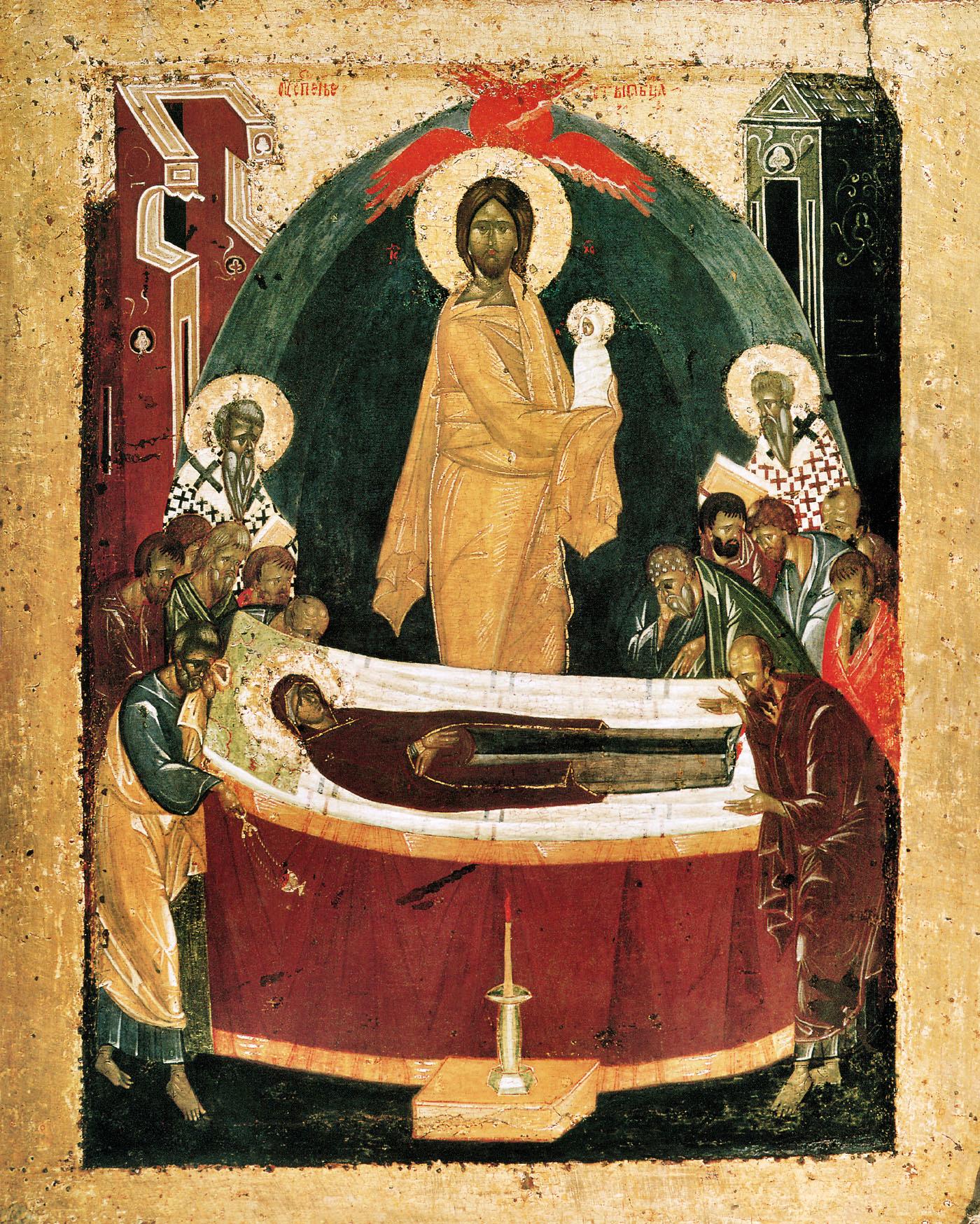
15/28 August – Dormition of our Most Holy Glorious Lady Theotokos and Ever-Virgin Mary
27 August 2011
After the Ascension of the Lord, the Mother of God was in the care of St. John the Theologian, and in his absence, she lived in the house of his parents near the Mount of Olives. She was a consolation and edification for the apostles and all the faithful. Talking with them, the Mother of God related the wonderful events of the Annunciation, seedless conception and Her giving birth without corruption to Christ, His infancy and entire life on earth. Like the apostles, She planted and confirmed the Christian Church by Her presence, word and prayers. The reverence of the apostles toward the Most Holy Virgin was extraordinary. After receiving the Holy Spirit on the significant day of Pentecost, they continued in Jerusalem for about ten years, ministering toward the salvation of the jews and wishing more often to see and hear from Her Divine words. Many from among the newly illumined by the faith came even from distant lands into Jerusalem in order to see and hear the Most Pure Theotokos.
During Herod’s persecution of the young Church of Christ (Acts 12:1-3), the Most Holy Virgin Mary, together with the apostles John the Theologian, in the year 43, went to Ephesus, where it was his lot to preach the Gospel. She also visited St. Lazarus the Four-days-dead on Cyprus, he was the bishop there, she went to Mount Athos, of which, according to St. Stephen of the Holy Mountain, the Mother of God said prophetically: “This place shall be my lot, given Me by My Son and My God. I shall be the Protectress of this place and the Intercessor for it.”
The circumstances of the falling asleep of the Mother of God are known in the Orthodox Church from apostolic times. In the first century, hieromartyr Dionysius the Areopagite wrote about Her Dormition. In the second century, narrative about the bodily translation of the Most Holy Virgin Mary to Heaven is found in the works of Meliton, bishop of Sardis. In the fourth century, St. Epiphanius of Cyprus points to the tradition regarding the Dormition of the Mother of God. In the fifth century, St. Juvenal, Patriarch of Jerusalem, said to the holy right-believing greek queen Pulcheria: “Even though Sacred Scriptures do not contain information about the circumstances regarding Her falling asleep, we know of them from the most ancient and most sure tradition.” This tradition is carefully collected and presented in the church history of Nicephorus Callistus in the fourteenth century.
Evidence remains that at the end of the seventh century there existed a church over the underground church of the Dormition of the Most Holy Theotokos; from this church’s bell tower one could see the dome of the church of the Resurrection of the Lord. There are no traces of this church now. However, despite the destruction and changes, the general primary crosswise foundation of the church remains.
“It is necessary for that, which was formed of earth, and was going to return to earth, and then would ascend to heaven, having received in the earth the most pure life through the leaving of the flesh in it; it is necessary for the body through death, as though through the fire in the furnace, just like gold, having been cleansed of all darkness and the crude heaviness of corruption, to rise from the tomb incorrupt, pure and illumined with the light of immortality.” – These words belong to St. John of Damascus. On the feast of Dormition in the year 754, the saint delivered a homily in Jerusalem – over the Tomb of the Most Pure One, Who asked to be buried in Gethsemane, at the foot of the mount of Olives, not far from the place, where the last night in the earthly life of Her Son was spent.
According to the testimony of the byzantine church historian George Kedrin, the falling asleep of the Theotokos was preceded by a manner of second Annunciation: “the Most Holy Virgin, once, was praying on Her knees at the very place, where Her Divine Son once prayed about the cup, when, suddenly, Archangel Gabriel stood before Her, and giving Her the sign of victory over bodily death – a branch from the date palm in paradise – he announced to Her that She would fall asleep in three days.” George Kedrin writes that the apostle John the Theologian carried this branch before the bier of the Theotokos after Her Dormition.
The circumstances of the falling asleep of the Theotokos, as well as all related to Her, are set forth in the work of some Leucius, a younger contemporary of the apostles. This work is very ancient and is dated in the beginning of the second century of christian era; its content fully agrees with the orthodox service for Dormition. According to Leucius, the adopted son of the Most Pure apostle John and the first bishop of Jerusalem Jacob the brother of the Lord informed all the faithful about the coming Dormition of the Mother of God. Apostles, in wondrous manner, were brought from various regions into the Holy City of Jerusalem. Only apostle Thomas, by a special providence of God, was unable to bid farewell to the Mother of the Savior. Further, it is noted that the Theotokos was buried at the Gethsemane cemetery, near the valley of Jehosophat, near the graves of her parents: Ss. Joachim and Anna, in one of the three tombs in that section of the cemetery, the one closest to the east.
In 1972, archeologist and famous specialist in early christians monuments, franciscan Bellarmino Bagatti had the honor of confirming the absolute exactness of the topographical data of Leucius. A flood helped the discovery: in 1972 the underground church of the Dormition of the Mother of God was flooded more than usual. “Misfortunes often happen to be providential, – is written in the report of the monk professor. – In the past, when our Sister the Water finished its veneration at the holy place, the custodians, armenians and greeks, changed the vestments in the church and as soon as the walls were somewhat dry, painted them anew. However, this time it was decided to do a more thorough job. When the plaster fell, the stone wall of the burial chamber of the Virgin Mary stood before our eyes.”
Forty eight steps of the wide stone stairway, literally overflowing with a hot river of wax, made from the thousands of melted candles, on the days of Dormition, lead into the underground church. In the fifth century, over the tomb of the Ever-Virgin cut in stone, there stood a richly decorated byzantine style church, and there were only twenty steps, but since then, or more precisely from the time of the crusaders, the ground level changed and the Dormition church, one might say, went deeper into the rocky soil.
Three days before Dormition the orthodox clergy of Jerusalem transfers a silver Shroud into Gethsemane – in memory of the sad day, when the apostles carried the Most Pure body of the Theotokos from the house of apostle John on mount Sion. By the way, in a calendar, compiled before the time of the crusades in Jerusalem, there is the feast of “translation of the Body of Mary from mount Sion to Gethsemane.” On the 14th of August according to Church calendar, one day before the feast, Patriarch of Jerusalem and all the brotherhood of the Holy Tomb walk along the way of the Cross in the direction of the gates of Saint Stephen (they are also known as the Lion’s gates, and the Gates of Lady Mary). A small distance from them, beyond the Kedron valley, is situated the church of Dormition – the tomb of the Most Holy Theotokos.
…On the third day after the Dormition of the Theotokos the unconsolable apostle Thomas came to Gethsemane, and weeping, he bowed over the cave of the tomb. Having compassion for his sorrow, the other disciples agreed to move away the stone, which covered the entry into the tomb, however, the Most Pure Body was no longer there, for the Most Holy Theotokos “as though with sleep slept for a short while in death, she soon as from sleep, woke from it, and having shaken off the deadness of the tomb, as sleep from eyes, she saw the immortal life and glory in the light of the Countenance of the Lord” (from the canon of Dormition).
-
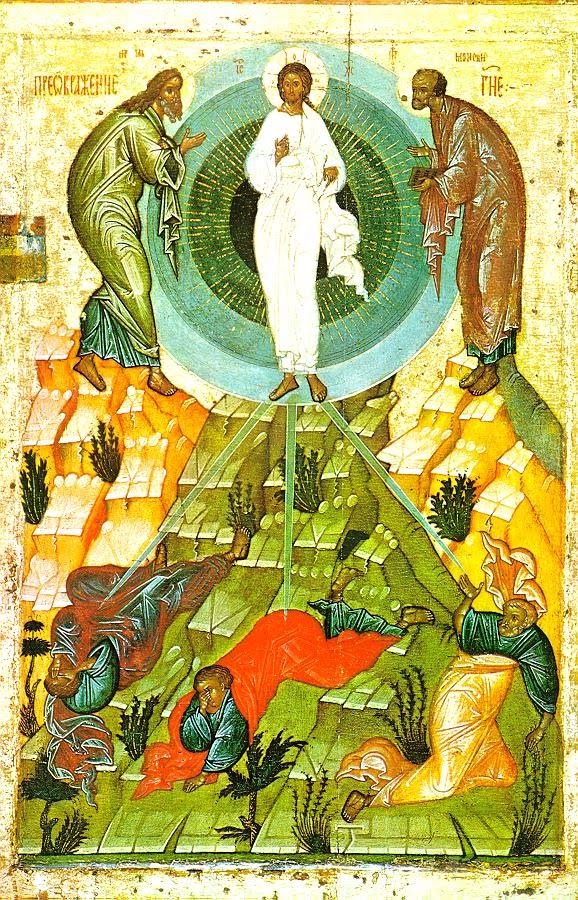
August 6/19 – Holy Transfiguration of our Lord God and Savior Jesus Christ… Second (“Apple”) feast of the Savior
19 August 2011
In the Transfiguration of the Lord the mystical Divine essence of the One, Who was still called Nazarene, suddenly became visible to the three disciples chosen by Himself, or, in the language of the Church, this Essence proceeded through the human nature of Jesus. Apostles Peter, James and John saw the Son, Whose image shown “like the sun.” At the same time, the Apostles physically experienced upon themselves “the grace of the Holy Spirit, coming, like a noetic light, brining joy” (according to the words of St. Symeon the New Theologian). And when Peter, for a moment being permeated by this Light, cried out: “Lord! It is good for us to be here,” the voice of the Heavenly Father: “This is My beloved Son, in Whom I am well pleased; hear ye Him” (Matthew 17:4) became audible for him, and for James and John.
The author of the Third Gospel, holy apostle Luke, in his description of the Transfiguration offers three most important details: the Lord’s “appearance of countenance” changed during the time of prayer; Prophets Moses and Elias spoke with Jesus “about His departure, which He had to accomplish in Jerusalem” (Luke 9:31); the disciples “were heavy with sleep” and that in some way foretold the unconquerable black sleepiness, that would soon come upon the apostles in the garden of Gethsemane at night.
Transfiguration of the Lord happened on the eve of the Old Testament feast of tabernacles, which is called “the feast of our joy,” “the feast of light” and other. During these days, according to ancient custom, the faithful had to dwell in houses made of branches – “tabernacles,” – which in part signified the corruptibility, instability, and temporary nature of all things earthly. However, at the same time the feast of Tabernacles is also the end of the difficult labor of cultivating the land for months, it is the gathering of the harvest.
“…if Thou willest, let us make three tabernacles here: one for Thee, one for Moses, and one for Elias, – Peter offered the Lord, “for he did not know what to say; for they were sore afraid” (Mark 9:6). According to Bishop Cassian (Bezobrazov), Peter thus tried to hold Transfiguration: for if Christ, the Son of the Living God, is near, and Moses, and Elias, who embody the Law of God and the Prophets, then, it must be that the Kingdom of God “is at the doors”: it either came already, or will come at any moment, and one would not have to go into cruel stone Jerusalem, above which hangs the red hot haze, and one could stay here, in the green, blossoming Galilee, on mount Tabor…
The Church tradition, rising at least to the third century A.D., points to mount Tabor, in the southern part of Galilee, as to the place of the Transfiguration of the Lord.
“Mount Tabor is earthly heaven, exultation of the soul and satiation of the eyes of the orthodox: for some divine grace is present, overshadowing the mountain, which is what inspires the spiritual joy,” – sometime wrote the greek from Crete, author of pilgrim’s notes, John Fokas; his visitation of the Holy Places of Palestine happened in 1187. It is difficult to say what exactly he saw on mount Tabor: some sources state that in 1181 the armies of calif Saladin destroyed the local monasteries and churches, killed those, who lived there, and upon the ruins they built a fortress to deflect the attacks of the crusaders.
The glorious “igumen of the Russian land” Daniel mentions the churches on Tabor in his “Pilgrimage”: “There is a place at the very top of the mountain, as though a stone hill, small, with a sharp top, upon that place Christ our God was Transfigured; there are good churches built there, one in honor of Transfiguration, and the other in honor of the holy prophets Moses and Elias.”
All of this, later on, disappeared at the hands of the destroyers, and only in the XIX century, greek orthodox church was built on Tabor, where one can see the remains of the buildings from the times of the holy Empress Helena, mother of holy Equal-to-the-apostles Emperor Constantine. The guide for the Russsian pilgrims, published in 1894 in Odessa, narrates: “Pilgrims take almost an hour in order to climb to the sacred top of the mountain of Transfiguration. At the walls of the greek monastery the caravan is greeted by the peeling of the bells and the pilgrims go straight into the church… Having venerated at the holy place, the pilgrims situate themselves within the walls of the monastery, however each one is capable. The entire building of the monastery, even the church is wide open to receive the distant travelers. In the evening, our Russian hieromonks, along with the entire brethren of Tabor, clergy from among the pilgrims, and in the presence of the Metropolitan [of Nazareth], serve the all-night vigil, and then, early in the morning, liturgy in Church Slavonic.”
The shining of the uncreated light of Tabor right next to sinful people, who were sleeping, contains within itself a promise: “it is impossible for Him not to enlighten those, who in a worthy manner participate in the Divine shining of His Body within us,” – writes St. Gregory Palamas. It was in this very manner that the blessed Batushka Seraphim of Sarov made his N.A. Motovilov a seer of the mystery and fellow participant of being in the Light of Transfiguration. “Imagine to yourself, in the middle of the sun, in the very shining brightness of its noon rays, the face of a man, who is talking to you. You see the moving of his lips, the changing expression of his eyes, hear his voice, yet you do not see yourself, nor his figure, but only the blinding light, stretching far, and illumining with its bight shining the snow, covering the meadow, and the pieces of snow, pouring from above upon me and upon the Great Elder”, – said Motovilov about what took place.
In continuation of the Old Testament custom, the fruits of the earth are blessed on Transfiguration, the heads of wheat and grapes, “for from it there comes wine, acceptable for the offering of the bloodless sacrifice”.
-
-
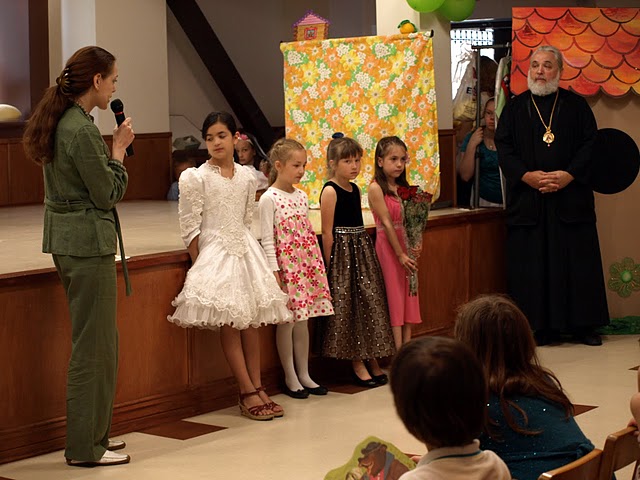
On Saturday, 18 June, the annual graduation at the Church Parish School of A.S. Pushkin, was held at the St. Nicholas cathedral in Montreal
30 June 2011
On Saturday, 18 June, the annual graduation at the Church Parish School of A.S. Pushkin, which exists at the parish since 1937, was held at St. Nicholas cathedral in Montreal in order to mark the ending of the school year.
A solemn prayer service for the occasion was conducted by His Eminence, the Very Most Reverend Gabriel, Archbishop of Montreal and Canada. Vladyka Gabriel, being the principal of the parish school at his cathedral, pays much attention to orthodox upbringing and education. Addressing the parents, teachers, and all those present, His Eminence, Archbishop Gabriel, in particular, noted that care for orthodox parish schools is the primary task of every parish in the Russian Diaspora, because in case of neglect, our parishes will face gradual extinction. Vladyka called upon the parents to do everything possible in order to make sure the children do not lose the connection with their native language and the great culture of Historical Russia. Vladyka also expressed the hope that the number of students at the cathedral parish school – where there are more than 70 students of different ages currently – will continue to grow with each year.
After the prayer service, students received certificates and awards, then there was a concert.
After the concert, everyone was invited to a traditional meal.
Here are the photos from the event, prepared by the teacher of Russian history and Church Slavonic language, E.M. Bormotova.
-

FOR THE DAY OF THE HOLY TRINITY
11 June 2011
Three times in the history of our salvation the Third Hypostasis of God – the Holy Spirit – visibly, audibly, and palpably manifested Itself “Who with the Father and the Son together is worshipped and glorified,” for the old testament world knew always the Holy Spirit “Who spoke by the prophets”: He was “in every pure soul, without Him no truly good work was ever completed” (Bishop Innocent of Kherson). The Holy Spirit invisibly dwelt in the Holy of Holies of the Jerusalem temple, but He departed when the Lord “gave up the spirit” on the Cross; as the mark of departure and the harbinger of the destruction of Jerusalem served the great sign: “…the veil of the temple [separating the Holy of Holies – YM] was rent in two, from the top to the bottom” (Matthew 16:37-38). It is essential that the description of this event we find not only in the Gospels, but also in the judean records, where a fairly exact date of what happenned is also given as the forty years before the destruction of the temple, i.e. in the 30th year after the Nativity of Christ, in the year of crucifixion.
The fullness of the Trinity was given to us in Theophany (Baptism of the Lord) at the Jordan; later on the Holy Spirit illumined the apostles with the uncreated light of Tabor in the miracle of Transfiguration; and, finally, “bestowing the tongues of fire, He called all into unity” in the Upper Room on Sion on the day of Pentecost.
Yet the very ability of men to receive the gifts of the Holy Spirit possesses as its source the meeting of the Life-creating Trinity in the image of Three Travelers by forefather Abraham, the friend of God.
“And the Lord appeared unto him in the plains of Mamre: and he sat in the tent door in the heat of the day; And he lifted up his eyes and looked, and, lo, three men stood by him: and when he saw them, he ran to meet them from the tent door, and bowed himself toward the ground, And said, My Lord, if now I have found favour in thy sight, pass not away, I pray thee, from thy servant” (Genesis 18:1-3).
As it follows from the Scriptures, the Friend of God addressed the Three Men in singular person.
The Mamre oak grove was situated on the slopes of the hollow to the west of Hebron of those days. The Oak of Mamre (in other words Abraham’s), under the shade of which the forefather received the Mystical Guests, survived miraculously to our days, having given life to multiple shoots.
“Old, very old is this Patriarch of the vanished forests of Palestine, – is said in the travelling notes of the famous Russian explorer and ethnographer A.V. Eliseev (With the Russian pilgrims to the Holy Land in the spring of 1884, St. Petersburg, 1885). – Many parts of it have dried, but it still lives, and though not every year, but does bear fruit… The venerable oak, according to my most thorough calculations, is in no way less than 4 to 5 thousand years old, judging by the number of the lairs of its triple and quadruple branches, the cuts of which I was able to observe.”
Christian writers of the XVII century mention the Oak of Abraham in their “travels,” it is notable that the location pointed out by them then matches exactly the current location of the tree.
The famous igumen Daniel, who visited the Holy Land during the time of the Jerusalem’s king Baldwin I, tells: “And from Bethlehem, facing south is Hebron, the cave of Abraham and the oak of Mamre. …The oak is close to the way, there walking on the right hand side; and it stands beautiful on the high mountain. …And here stood the tent of Abraham near the oak, facing east. And the oak is not very tall, spread out and is thick with branches, and there is much fruit on it.”
The piece of land, upon which the Oak of Mamre grew, was – together with the other most important parcels on the Holy Land – purchased for the Russian ownership by the ever-memorable archimandrite Antonin (Kapustin) – the director of the Russian Spiritual Mission.
The parcel “Khirbet-en-zibta,” pointed out by tradition as the biblical grove of Mamre, used to belong to the family of some Ibrahim Shalludi. The history of the purchase of the Oak deserves a more thorough look at it.
Only the subjects of the Ottoman empire were allowed to buy land openly in these regions. It was here that sometime famous mission translator Iakov Yegorovitch Khalebi played his role.
Iakov Yegorovitch adorned my live, – Fr. Antonin Kapustin, not inclined to emotional exclamations, spoke of him.
“In the winter of 1868, he [Khalebi – YM] appeared in Hebron under the guise of a merchant from Aleppo. Iakov Yegorovitch, carefully playing his role, as though buying merchandise, mingling in the midst of Hebron merchants, spent a long time there. Finally, after long and fatigueing negotiations, combinations, precautions, countless bribes, Shalludi sold the parcel with the Oak to Iakov Yegorovitch, a lawful ownership deed being drawn up for the transaction.
I had to hear about his meeting with Fr. Antonin in Jerusalem form eyewitnesses. Fr. archimandrite waited for Khalebi, who arrived, at the entrance into a hall, on the stairway, in the Mission building. As soon as Iakov Yegorovitch, still from below, saw the figure of Fr. Antonin, he joyously ran up the stairs, waving the deed and shouting: ‘the Oak is Russian, the Oak is Russian!’ Fr. Antonin joyously opened his embrace to him and kissed him.” (Archimandrite Cyprian Kern. Fr. Antonin Kapustin. Belgrade, 1934).
On 22 May, 1871, at the Oak of Mamre first Liturgy was served, and to this day, on the third day of the feast of Pentecost, the clergy of the Mission serves Liturgy upon a movable altar table under the tree, from which all of our trinity birches take our beginning.
The buiding of the large church with three altars dedicated to the holy Forefathers was started only in 1907, while archimandrite Leonid (Sentsov) was the director of the Mission. The work was completed only in 1925.
“It is easy to reestablish how the travellers journeyed, – says a guide “Holy Land” (Paris, 1960). – Most likely, they descended into the Hebron Valley from the Northwest, and Abraham, who sat in the shadow of his tent in the midday heat, saw them on the slope of the mountain, where there now stand Russian cathedral and a house for pilgrims.”
